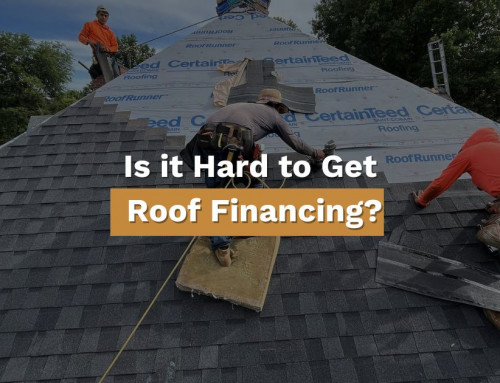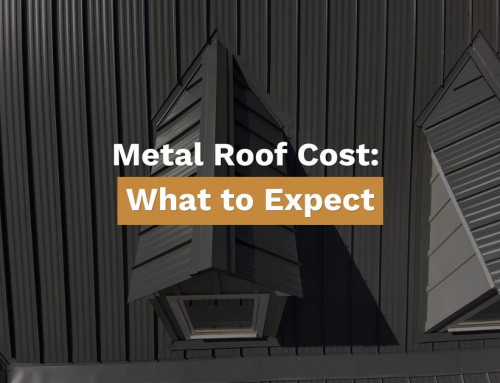
Key Takeaways
One of the most common questions homeowners have is whether home insurance covers roof replacement if damage is due to sudden events like storms, wind, hail, or fire. Insurance may cover roof replacement if damage is due to these sudden events, but it won’t cover aging, lack of maintenance, or gradual wear. To file a claim, inspect the damage, contact your insurer, get a professional inspection, and compare estimates. Know your policy details, whether they cover actual cash value or replacement cost value. Regular maintenance and quick action after storms can help ensure coverage. For more details, visit Five Points Roofing’s guide.
Does Insurance Cover the Cost of a Roof Replacement?
One of homeowners’ most common concerns when facing roof replacement is whether their insurance will cover the cost. The answer depends on several factors, such as the cause of the damage, the condition of your roof, and the specifics of your policy.
At Five Points Roofing Company, we understand how frustrating it can be to deal with insurance while handling a significant home repair. Here’s what you need to know about when and how insurance may cover a replacement.
When Does Homeowners Insurance Cover Roof Replacement?
Typically, homeowners insurance covers unexpected damage caused by sudden storms or accidents, but understanding your roof coverage is crucial. Typical situations where insurance may cover replacement include:
Storm Damage
Insurance often covers storm damage, such as wind, hail, or falling trees. If high winds rip shingles off your roof or a tree crashes through it, insurance will usually help with the repair or replacement costs. Filing a roof insurance claim promptly after storm damage can help ensure that your repairs or replacement are covered.
Hail Damage
Hailstorms can cause dents, cracks, or other damage to roofing materials. Most homeowners insurance policies will cover this damage as long as it’s reported soon after the storm. Prompt roof repairs after damage can prevent further issues and ensure your insurance claim is successful.
Wind Damage
Strong winds can lift shingles, cause debris to hit your roof, or knock down trees, leading to roof damage. Insurance typically covers these incidents as part of storm damage. Timely roof repair after wind damage can help maintain the integrity of your home and ensure your insurance claim is processed smoothly.
Fire or Other Natural Disasters
Damage from fires, lightning, or other natural disasters like tornadoes is usually covered. It’s essential to check your policy, as coverage may vary for specific events like earthquakes or floods. Understanding your roof insurance policy can help you navigate the claims process after a natural disaster.
When Insurance Won’t Cover a Roof Replacement
While insurance typically covers damage from unexpected events, it generally won’t pay for replacement if it is due to old age, lack of maintenance, or wear and tear. Some situations where your claim might be denied include:
Regular roof maintenance can help prevent issues that might lead to a denied insurance claim.
Aging Roof
If your roof is old and near the end of its lifespan, insurance won’t cover replacing it. Most roofs last 15 to 30 years, depending on the material, and insurance companies expect homeowners to maintain their roofs and replace them when necessary. A standard homeowners insurance policy usually does not cover replacement for aging roofs.
Neglect
Your insurance company may only accept your claim if your roof has been adequately maintained. Visible issues like moss buildup, clogged gutters, or missing shingles can lead to a denial, as the damage is considered preventable. Your homeowner’s insurance company will evaluate your roof’s maintenance history when processing your claim.
Gradual Damage
Damage that happens over time isn’t usually covered. Insurance is designed to cover sudden, unexpected events, not issues that arise over time with regular exposure to the elements.
Choosing high-quality roofing material can help prevent gradual damage and extend the lifespan of your roof.
Filing a Roof Replacement Insurance Claim
If your roof is damaged by a covered event, here’s how you can file a claim with your homeowners insurance company:
Inspect the Damage
Check your roof for visible damage, such as missing shingles, dents, or broken branches. Take photos to document the damage, but avoid getting on the roof yourself if it’s unsafe. Proper documentation is essential for a successful roof insurance claim.
Contact Your Insurance Company
Notify your homeowner’s insurance company immediately after the damage occurs. They will guide you through the claims process and let you know what steps to take next. Here is a list of insurance carriers and contact information.
Schedule a Professional Inspection
Have a roofing contractor inspect the damage. At Five Points Roofing Company, we can provide a detailed report for your insurance company, including an estimate for repairs or replacement. Hiring a local roofing company can ensure the inspection is thorough and tailored to your area’s needs. How to file an insurance claim?
Meet the Insurance Adjuster
Your insurance company will send an adjuster to inspect the damage. A contractor’s estimate can help ensure that all the damage is properly documented. Working with a reputable roofing company can also help ensure that all damage is properly documented and addressed.
Review the Estimate
Once your claim is approved, you’ll receive an estimate of what your insurance will cover. Review this carefully and compare it with the contractor’s estimate. Understanding your roof insurance policy can help you make informed decisions during the claims process.
Full vs. Partial Coverage
Sometimes, your roof coverage may only extend to part of the roof. If only one section of your roof is damaged, they may only pay for the repair of that area. Additionally, some policies only cover an older roof’s actual cash value (ACV), meaning the payout is based on the depreciated value. On the other hand, a replacement cost value (RCV) policy will cover the total cost of replacing the roof minus your deductible.
Tips for Ensuring Insurance Coverage
Keep Up with Roof Maintenance: Regular inspections and maintenance can help you avoid preventable issues. Keep records of any work done on your roof, which can support your claim if a dispute arises. Roof maintenance is essential to preserve the integrity of your roof and maximize insurance claims, as neglect can lead to denied claims for damage not associated with covered events.
Act Fast After a Storm: If you suspect damage, contact your insurance company immediately. Waiting too long can result in a denied claim.
Know Your Policy: Understand whether your policy covers the total replacement cost or the actual cash value of your roof. If you’re unsure, ask your insurance agent to explain the details.
Conclusion
Whether or not your insurance will cover the cost of a roof replacement depends on the cause of the damage and the terms of your policy. Most insurance policies cover damage caused by storms, hail, wind, and fire. Still, they typically won’t cover replacement due to age or neglect. Understanding the roof insurance claim process can help ensure your roof replacement is covered.
At Five Points Roofing Company, we can help you navigate the insurance process and ensure your roof is inspected, repaired, or replaced correctly. When you need a professional roof inspection or help with an insurance claim, contact us today!




